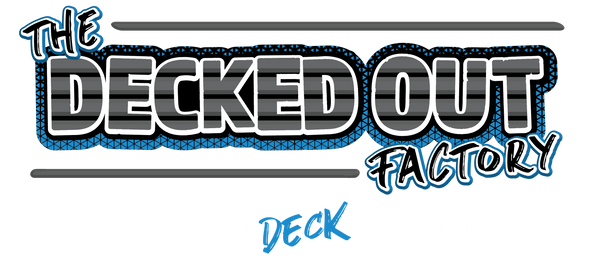Quick Listen:
In a world filled with a myriad of materials designed to make life more comfortable and functional, few have made as significant an impact on various industries as Ethylene Vinyl Acetate (EVA) foam. From the soles of shoes to the padding in sports equipment, EVA foam has revolutionized comfort and performance. But what exactly is EVA foam, and why is it so effective in providing the cushioning and support we rely on daily? This article delves into the science behind EVA foam, its unique properties, and its diverse applications, shedding light on why it remains a preferred material in so many industries.
What is EVA Foam?
Ethylene Vinyl Acetate (EVA) foam is a soft, flexible, and durable material made by combining ethylene and vinyl acetate polymers. The resulting foam is a closed-cell structure, meaning it is made up of cells that are not interconnected, making it lightweight, water-resistant, and capable of providing excellent cushioning and shock absorption. EVA foam has a wide range of uses, primarily due to its ability to retain its form under pressure, flexibility, and softness.
The Unique Structure of EVA Foam
At the heart of EVA foam's effectiveness is its molecular structure. The material is produced by blending two key polymers: ethylene and vinyl acetate. Ethylene is a widely used polymer that provides strength, while vinyl acetate imparts elasticity and softness. The ratio of these polymers can be adjusted during manufacturing to influence the foam's density, flexibility, and resilience, making it highly customizable for various applications.
When combined, these polymers form a foamy matrix with a closed-cell structure, meaning the tiny air pockets inside the foam are isolated from one another. This structure is crucial for creating a material that offers cushioning and shock absorption without compromising on strength. The closed cells trap air within the foam, making it lightweight and buoyant, while the material remains durable and resistant to compression over time.
Flexibility and Comfort: EVA Foam in Footwear
One of the most prominent uses of EVA foam is in the footwear industry, particularly in the production of athletic shoes, sandals, and insoles. The unique combination of flexibility and cushioning makes EVA foam an ideal material for providing both comfort and support in shoes.
EVA foam's ability to conform to the shape of the foot while maintaining its structure is a significant factor in enhancing comfort. The foam's inherent softness reduces pressure on key points of the foot, alleviating pain and discomfort during extended periods of walking or running. Additionally, its shock-absorbing qualities help to reduce the impact of each step, making it an ideal choice for athletic footwear designed to minimize fatigue and injury.
Moreover, EVA foam is highly lightweight, which contributes to the overall comfort of footwear. A lighter shoe puts less strain on the wearer, especially for long-distance runners or athletes who need to maintain peak performance. Because EVA foam can be molded into various shapes and thicknesses, it also allows manufacturers to design shoes that provide the perfect balance of cushioning and support tailored to different activities or foot types.
Durability and Shock Absorption: EVA Foam in Sports Equipment
Another key benefit of EVA foam is its exceptional durability and shock-absorbing properties, which make it an indispensable material in the production of sports equipment. Whether it's padding in helmets, protective gear for athletes, or mats for gymnastics, EVA foam provides a cushion that helps protect users from injury while maintaining its integrity over time.
EVA foam's ability to absorb shocks and impacts makes it particularly valuable in high-contact sports. For example, in the case of a helmet, EVA foam helps reduce the risk of head injuries by absorbing the force of an impact, dissipating the energy that could otherwise cause harm. Its flexibility ensures that the foam does not crack or degrade easily under pressure, making it a long-lasting solution for high-stress environments.
In addition to helmets and protective pads, EVA foam is used in equipment such as yoga mats, boxing gloves, and knee pads. The closed-cell structure of the foam prevents moisture from being absorbed, making it resistant to odor buildup and ensuring hygiene. This feature is particularly beneficial in athletic environments where sweat and moisture are inevitable. Furthermore, the foam maintains its resilience even after prolonged use, providing consistent performance across multiple seasons.
EVA Foam in Other Industries: Applications Beyond Footwear and Sports
While EVA foam is most commonly associated with footwear and sports equipment, its versatility allows it to be used in a wide array of other industries. Some notable applications include:
- Packaging: EVA foam is used as a protective packaging material due to its lightweight and shock-absorbing properties. It helps cushion fragile items during transit, ensuring that products arrive at their destination without damage. Its flexibility also allows it to mold to the shape of the item being packaged, providing a custom fit for added protection.
- Furniture: In the furniture industry, EVA foam is often used in cushions and padding. Its softness and resilience make it ideal for creating comfortable seating options that provide long-lasting support. The foam can be shaped and molded into various forms, making it a versatile option for everything from sofas to outdoor cushions.
- Medical Equipment: EVA foam is also widely used in the medical field, particularly in products that require both comfort and durability. It is often found in orthopedic supports, cushions for hospital beds, and protective pads for medical devices. The material's hypoallergenic and non-toxic properties further enhance its suitability for medical applications.
- Toys and Children's Products: EVA foam is commonly used in the production of children's toys and play mats. Its softness ensures that children can play safely without the risk of injury, while its durability allows it to withstand rough handling. EVA foam's non-toxic nature makes it a safe choice for children's products, as it is free from harmful chemicals that could pose health risks.
- Automotive Industry: In the automotive industry, EVA foam is used in a variety of applications, from soundproofing to padding in car seats. Its ability to absorb vibrations and reduce noise makes it an effective material for creating a more comfortable and quieter ride. Additionally, EVA foam is used in automotive seals, gaskets, and insulation, contributing to the overall quality and performance of vehicles.
Why EVA Foam Stands Out
There are several reasons why EVA foam has become such a widely used material across so many industries. First and foremost, its combination of flexibility, durability, and lightweight nature makes it an ideal material for products that require comfort and protection. EVA foam's closed-cell structure allows it to provide excellent shock absorption and cushioning without being overly bulky or heavy.
Additionally, EVA foam is highly resistant to wear and tear, making it a long-lasting option for products that undergo heavy use. It does not easily lose its shape or degrade over time, ensuring that it continues to perform well in demanding environments. Moreover, its resistance to moisture, chemicals, and UV light means it can be used in both indoor and outdoor applications without losing its effectiveness.
Finally, EVA foam is relatively easy to work with and can be molded into a wide variety of shapes and sizes. This versatility allows manufacturers to create customized solutions for a range of needs, whether it's creating a highly cushioned insole for a specific type of shoe or designing protective padding for a sports helmet.
The Science Behind the Comfort
EVA foam is a material that excels in offering comfort, durability, and flexibility across numerous industries. Whether you're wearing a pair of running shoes, using sports equipment, or simply sitting on a cushioned chair, the science behind EVA foam plays a pivotal role in ensuring a comfortable experience. Its unique structure, combined with its impressive shock-absorbing and shock-resistant properties, makes it an essential component in products that prioritize user comfort and protection. As industries continue to evolve and innovation drives new designs, EVA foam will remain a cornerstone of the comfort-driven world we live in.
Disclaimer: This helpful resources content contains personal opinions and experiences. The information provided is for general knowledge and does not constitute professional advice.
You may also be interested in: Benefits of Seadek Boat Flooring | Decked Out Factory
Can't find customization that's built to last? Decked Out Factory specializes in foam decking for boat decks, cooler tops, truck steps, and SXS mats, designed for both durability and style. With our easy-to-apply Stick-It-Series and the secure Snap-It-Series, transforming your crib and gear is simple and effective. Have it all: Style, comfort and function, customized just for you. Get started on a personalized adventure - start your customization with Decked Out Factory today!
Powered by flareAI.

